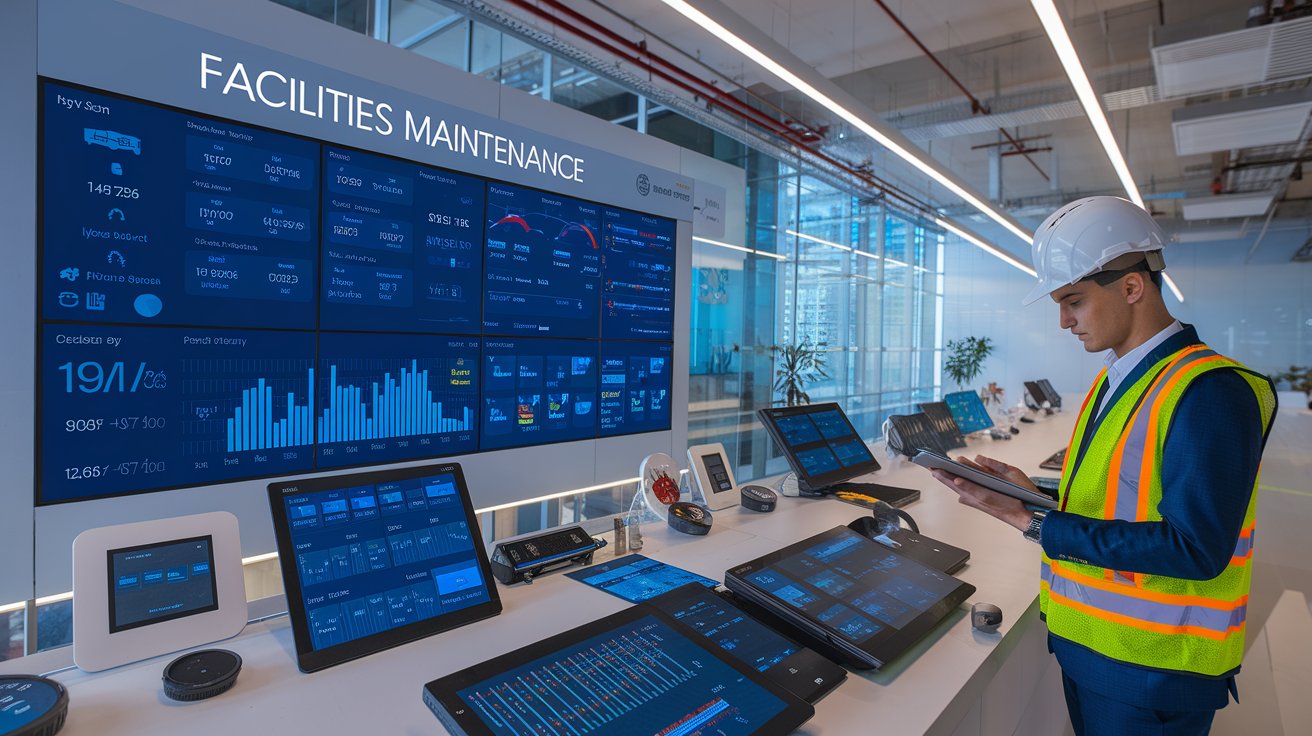Facilities maintenance is an important part of any building's lifecycle, affecting everything from operational efficiency to tenant happiness and the total lifespan of the structure. Proper maintenance of your building systems ensures that everything operates well, eliminates downtime, and prevents costly repairs. In this post, we'll look at what facilities maintenance entails, the benefits, and how to manage it successfully to maintain your facility in peak condition.

What Is Facilities Maintenance?
Facility maintenance refers to the operations necessary to keep a building and its systems operational. This covers normal maintenance chores such as cleaning and inspecting equipment, as well as more complex repairs and improvements. The purpose is to avoid breakdowns, increase energy efficiency, and provide a safe workplace for renters and employees.
Facilities maintenance typically involves a combination of preventive maintenance, corrective maintenance, and predictive maintenance.
- Preventive Maintenance
This type of maintenance includes regular inspections and routine repairs to prevent problems before they occur. Examples include checking HVAC filters, testing emergency lighting, and servicing plumbing systems. Preventive maintenance helps identify minor issues early, reducing the risk of costly breakdowns. - Corrective Maintenance
Corrective maintenance occurs when something breaks down or malfunctions. It involves repairing or replacing faulty components to restore the system to its normal operation. For example, if an air conditioning unit stops working, corrective maintenance would be needed to fix the issue. - Predictive Maintenance
Predictive maintenance uses data and technology to predict when equipment or systems might fail. Sensors and monitoring systems help identify early warning signs, allowing facilities managers to address issues before they cause disruptions.
Benefits of Facilities Maintenance
- Increased Longevity of Equipment
Regular maintenance helps extend the life of your building’s systems and equipment. For instance, HVAC units that are regularly serviced last longer and perform more efficiently, resulting in fewer repairs and replacements. - Improved Safety and Compliance
Ensuring that your building complies with safety codes and regulations is a critical aspect of facilities maintenance. Regular inspections help identify hazards, such as faulty wiring or fire safety equipment, and correct them before they pose risks to tenants or employees. - Cost Savings
By investing in preventive and predictive maintenance, facilities managers can reduce emergency repair costs and improve the efficiency of building systems. Proactive maintenance helps avoid the need for expensive last-minute fixes, which can disrupt operations and increase downtime. - Enhanced Productivity
Well-maintained facilities lead to a more comfortable and productive environment. For example, regular maintenance of air conditioning systems ensures that building occupants are comfortable, while properly functioning lighting and elevators improve accessibility and reduce disruptions. - Sustainability
Sustainable maintenance practices are becoming increasingly important in today's environmentally-conscious world. Maintaining energy-efficient systems, replacing old lighting with LEDs, and ensuring proper insulation all contribute to reducing the facility’s carbon footprint.
Key Aspects of Facilities Maintenance
- HVAC Systems
HVAC (heating, ventilation, and air conditioning) systems are central to maintaining indoor air quality and temperature control. Regular servicing, such as cleaning ducts and replacing filters, ensures optimal performance and energy efficiency. - Plumbing
Plumbing maintenance is essential to ensure that water systems are functioning correctly. This includes checking for leaks, unclogging drains, and inspecting water heaters. Routine maintenance can help prevent water damage and costly repairs. - Electrical Systems
The electrical system must be regularly inspected to prevent hazards such as power surges or faulty wiring. Routine checks of circuit breakers, fuses, and electrical panels help ensure safe and reliable power. - Building Envelope
Maintaining the exterior of the building—such as the roof, windows, and foundation—is crucial to prevent water infiltration and damage. Regular inspections for signs of wear and tear, as well as prompt repairs, help avoid costly structural issues. - Grounds and Exterior Maintenance
Facilities maintenance also includes landscaping and exterior upkeep. Regular grounds maintenance, such as lawn care, snow removal, and cleaning outdoor spaces, helps create a pleasant and safe environment for tenants and visitors.
Best Practices for Effective Facilities Maintenance
- Create a Maintenance Schedule
Developing a detailed maintenance schedule is essential for staying on top of routine tasks and inspections. This should include daily, weekly, monthly, and yearly tasks, with specific deadlines for each. - Use Technology for Monitoring
Implementing a facilities management software or building management system (BMS) allows you to monitor and manage maintenance tasks more efficiently. These systems can track work orders, schedule maintenance, and provide real-time data on the building’s performance. - Train and Educate Staff
Ensure that maintenance staff are properly trained and understand the importance of regular inspections and maintenance tasks. Providing ongoing education on new systems, technologies, and best practices can improve the effectiveness of your maintenance program. - Keep Detailed Records
Proper documentation of all maintenance activities is crucial. This includes keeping records of inspections, repairs, replacements, and equipment servicing. These records not only help track the condition of systems but also ensure compliance with regulations and can be useful for audits. - Partner with Experts
For more complex systems, such as HVAC or electrical, consider partnering with specialized contractors who have the expertise to handle these systems. Regular inspections and servicing by qualified professionals can prevent costly repairs and extend the life of the equipment.
Effective facility maintenance is critical to ensuring that a building runs smoothly, is safe, and retains its value over time. Facilities managers can save money, increase safety, and improve tenant satisfaction by combining preventative, corrective, and predictive maintenance strategies. Regular maintenance and the use of technology to monitor building systems will ensure a facility's longevity and sustainability.
